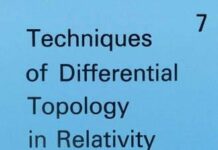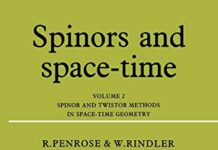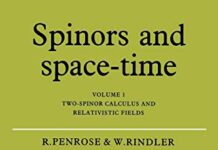
Ebook Info
- Published: 2016
- Number of pages: 520 pages
- Format: PDF
- File Size: 6.96 MB
- Authors: Roger Penrose
Description
Nobel Prize–winning physicist Roger Penrose questions some of the most fashionable ideas in physics today, including string theoryWhat can fashionable ideas, blind faith, or pure fantasy possibly have to do with the scientific quest to understand the universe? Surely, theoretical physicists are immune to mere trends, dogmatic beliefs, or flights of fancy? In fact, acclaimed physicist and bestselling author Roger Penrose argues that researchers working at the extreme frontiers of physics are just as susceptible to these forces as anyone else. In this provocative book, he argues that fashion, faith, and fantasy, while sometimes productive and even essential in physics, may be leading today’s researchers astray in three of the field’s most important areas―string theory, quantum mechanics, and cosmology.Arguing that string theory has veered away from physical reality by positing six extra hidden dimensions, Penrose cautions that the fashionable nature of a theory can cloud our judgment of its plausibility. In the case of quantum mechanics, its stunning success in explaining the atomic universe has led to an uncritical faith that it must also apply to reasonably massive objects, and Penrose responds by suggesting possible changes in quantum theory. Turning to cosmology, he argues that most of the current fantastical ideas about the origins of the universe cannot be true, but that an even wilder reality may lie behind them. Finally, Penrose describes how fashion, faith, and fantasy have ironically also shaped his own work, from twistor theory, a possible alternative to string theory that is beginning to acquire a fashionable status, to “conformal cyclic cosmology,” an idea so fantastic that it could be called “conformal crazy cosmology.”The result is an important critique of some of the most significant developments in physics today from one of its most eminent figures.
User’s Reviews
Editorial Reviews: Review “Roger Penrose, Co-Winner of the Nobel Prize in Physics, Royal Swedish Academy of Sciences””Winner of the 2017 PROSE Award in Chemistry & Physics, Association of American Publishers””Physics has been at an awkward impasse for the past century. Two theories–quantum mechanics and general relativity–are widely believed to be true. . . . But they contradict each other in basic ways–they cannot both be entirely true. In Fashion, Faith, and Fantasy in the New Physics of the Universe . . . Roger Penrose, an elder statesman of physics, considers the problem. As intellectually offbeat as he is eminent . . . He ventures here some novel ways in which the two theories might be reconciled.” ― Wall Street Journal”Penrose gets to the heart of modern physics’ problem with subjectivity in this insightful and provocative pop-sci title. . . . [A] rewarding discussion of scientific stumbles in the search for truth.” ― Publishers Weekly”It is always inspiring to read Penrose’s uncompromisingly independent perspective on physics.”—Richard Dawid, Nature”An extremely original, rich, and thoughtful survey of today’s most fashionable attempts to decipher the cosmos on its smallest and largest scales.” ― Science”I can’t recommend [Fashion, Faith, and Fantasy in the New Physics of the Universe] too highly to anyone with a serious interest in fundamental questions about physics.”—Peter Woit, Not Even Wrong”In standing outside the fray and criticising the central dogmas of fundamental physics, Penrose is playing the role of Einstein, who forced quantum theorists to defend and hone their ideas, and Sir Fred Hoyle, who persistently challenged Big Bang theorists to sharpen their ideas. This is an extremely important role, and long may Penrose fulfill it.” ― Times Higher Education”[A] beautifully produced, beautifully laid-out and diagrammed book. . . . There is possibly no better or more original expositor than Penrose to draw from. If modern physics theory is of interest to you, you certainly won’t want to ignore this book.” ― Math Frolic”The book is replete with phenomenal visual representations of the physics under discussion, a reminder of Penrose’s ability to see and describe physics in a unique way. . . . Ultimately, what is most valuable about the book is the excellent example he offers in how to ask questions.”—Chanda Prescod-Weinstein, Physics World”Something is rotten in the state of physics. . . . The eminent mathematician and physicist Roger Penrose identifies several possible sources of the rot. . . . He is not one to be intimidated by an overwhelming majority, no matter how illustrious and vocal it is. He sets out his objections politely and with exemplary patience towards the keepers of physics orthodoxy. . . . Time will tell whether any of his judgments are correct. In the meantime, his critics would do well to remember George Bernard Shaw’s warning: ‘The minority is sometimes right; the majority is always wrong.'”—Graham Farmelo, The Guardian”A valuable insight into what one of the most prominent theoretical physicists of recent times makes of reality’s relationship to ideas in quantum theory, standard cosmology, and theories that pretend to replace them.”—Richard Webb, New Scientist”The strength of this book is how the reader can appreciate science as a human undertaking.” ― Choice”The most important thing is not exactly what he writes about string theory, cosmology and quantum mechanics in his latest book . . . but that a book so wide and deep in its erudition could be written at all. If his successors cannot do the same, science will be all the poorer.”—Philip Ball, Prospect”There are valuable perspectives given by Penrose that only someone of his stature in the physics community can offer, and that should be taken seriously.”—Steven Ball, Perspectives on Science and Christian Faith”Excellent and provocative. . . . I strongly recommend this book for all students of the Supreme Court.”—Thomas G. Hansford, Law and Politics Book Review Review “This gem of a book is vintage Roger Penrose: eloquently argued and deeply original on every page. His perspective on the present crisis and future promise of physics and cosmology provides an important corrective to fashionable thinking at this crucial moment in science. This book deserves the widest possible hearing among specialists and the public alike.”―Lee Smolin, author of Time Reborn: From the Crisis in Physics to the Future of the Universe From the Back Cover “This gem of a book is vintage Roger Penrose: eloquently argued and deeply original on every page. His perspective on the present crisis and future promise of physics and cosmology provides an important corrective to fashionable thinking at this crucial moment in science. This book deserves the widest possible hearing among specialists and the public alike.”–Lee Smolin, author of Time Reborn: From the Crisis in Physics to the Future of the Universe About the Author Roger Penrose, one the world’s foremost theoretical physicists, has won numerous prizes, including the Nobel Prize and the Albert Einstein Medal, for his fundamental contributions to general relativity and cosmology. He is the bestselling author, with Stephen Hawking, of The Nature of Space and Time (Princeton). Penrose’s other books include Cycles of Time: An Extraordinary New View of the Universe and The Road to Reality: A Complete Guide to the Laws of the Universe (both Vintage). He is the Rouse Ball Professor of Mathematics Emeritus at the University of Oxford and lives in Oxford, England. Read more
Reviews from Amazon users which were colected at the time this book was published on the website:
⭐Sir Roger Penrose is one of the most distinguished theoretical physicists and mathematicians working today. He is known for his work on general relativity, including the Penrose-Hawking Singularity Theorems, which were a central part of the renaissance of general relativity and the acceptance of the physical reality of black holes in the 1960s and 1970s. Penrose has contributed to cosmology, argued that consciousness is not a computational process, speculated that quantum mechanical processes are involved in consciousness, proposed experimental tests to determine whether gravitation is involved in the apparent mysteries of quantum mechanics, explored the extraordinarily special conditions which appear to have obtained at the time of the Big Bang and suggested a model which might explain them, and, in mathematics, discovered Penrose tiling, a non-periodic tessellation of the plane which exhibits five-fold symmetry, which was used (without his permission) in the design of toilet paper.“Fashion, Faith, and Fantasy” seems an odd title for a book about the fundamental physics of the universe by one of the most eminent researchers in the field. But, as the author describes in mathematical detail (which some readers may find forbidding), these all-too-human characteristics play a part in what researchers may present to the public as a dispassionate, entirely rational, search for truth, unsullied by such enthusiasms. While researchers in fundamental physics are rarely blinded to experimental evidence by fashion, faith, and fantasy, their choice of areas to explore, willingness to pursue intellectual topics far from any mooring in experiment, tendency to indulge in flights of theoretical fancy (for which there is no direct evidence whatsoever and which may not be possible to test, even in principle) do, the author contends, affect the direction of research, to its detriment.To illustrate the power of fashion, Penrose discusses string theory, which has occupied the attentions of theorists for four decades and been described by some of its practitioners as “the only game in town”. (This is a piñata which has been whacked by others, including Peter Woit in
⭐and Lee Smolin in
⭐.) Unlike other critiques, which concentrate mostly on the failure of string theory to produce a single testable prediction, and the failure of experimentalists to find any evidence supporting its claims (for example, the existence of supersymmetric particles), Penrose concentrates on what he argues is a mathematical flaw in the foundations of string theory, which those pursuing it sweep under the rug, assuming that when a final theory is formulated (when?), its solution will be evident. Central to Penrose’s argument is that string theories are formulated in a space with more dimensions than the three we perceive ourselves to inhabit. Depending upon the version of string theory, it may invoke 10, 11, or 26 dimensions. Why don’t we observe these extra dimensions? Well, the string theorists argue that they’re all rolled up into a size so tiny that none of our experiments can detect any of their effects. To which Penrose responds, “not so fast”: these extra dimensions, however many, will vastly increase the functional freedom of the theory and lead to a mathematical instability which will cause the theory to blow up much like the ultraviolet catastrophe which was a key motivation for the creation of the original version of quantum theory. String theorists put forward arguments why quantum effects may similarly avoid the catastrophe Penrose describes, but he dismisses them as no more than arm waving. If you want to understand the functional freedom argument in detail, you’re just going to have to read the book. Explaining it here would require a ten kiloword review, so I shall not attempt it.As an example of faith, Penrose cites quantum mechanics (and its extension, compatible with special relativity, quantum field theory), and in particular the notion that the theory applies to all interactions in the universe (excepting gravitation), regardless of scale. Quantum mechanics is a towering achievement of twentieth century physics, and no theory has been tested in so many ways over so many years, without the discovery of the slightest discrepancy between its predictions and experimental results. But all of these tests have been in the world of the very small: from subatomic particles to molecules of modest size. Quantum theory, however, prescribes no limit on the scale of systems to which it is applicable. Taking it to its logical limit, we arrive at apparent absurdities such as Schrödinger’s cat, which is both alive and dead until somebody opens the box and looks inside. This then leads to further speculations such as the many-worlds interpretation, where the universe splits every time a quantum event happens, with every possible outcome occurring in a multitude of parallel universes.Penrose suggests we take a deep breath, step back, and look at what’s going on in quantum mechanics at the mathematical level. We have two very different processes: one, which he calls U, is the linear evolution of the wave function “when nobody’s looking”. The other is R, the reduction of the wave function into one of a number of discrete states when a measurement is made. What’s a measurement? Well, there’s another ten thousand papers to read. The author suggests that extrapolating a theory of the very small (only tested on tiny objects under very special conditions) to cats, human observers, planets, and the universe, is an unwarranted leap of faith. Sure, quantum mechanics makes exquisitely precise predictions confirmed by experiment, but why should we assume it is correct when applied to domains which are dozens of orders of magnitude larger and more complicated? It’s not physics, but faith.Finally we come to cosmology: the origin of the universe we inhabit, and in particular the theory of the big bang and cosmic inflation, which Penrose considers an example of fantasy. Again, he turns to the mathematical underpinnings of the theory. Why is there an arrow of time? Why, if all of the laws of microscopic physics are reversible in time, can we so easily detect when a film of some real-world process (for example, scrambling an egg) is run backward? He argues (with mathematical rigour I shall gloss over here) that this is due to the extraordinarily improbable state in which our universe began at the time of the big bang. While the cosmic background radiation appears to be thermalised and thus in a state of very high entropy, the smoothness of the radiation (uniformity of temperature, which corresponds to a uniform distribution of mass-energy) is, when gravity is taken into account, a state of very low entropy which is the starting point that explains the arrow of time we observe.When the first precision measurements of the background radiation were made, several deep mysteries became immediately apparent. How could regions which, given their observed separation on the sky and the finite speed of light, have arrived at such a uniform temperature? Why was the global curvature of the universe so close to flat? (If you run time backward, this appeared to require a fine-tuning of mind-boggling precision in the early universe.) And finally, why weren’t there primordial magnetic monopoles everywhere? The most commonly accepted view is that these problems are resolved by cosmic inflation: a process which occurred just after the moment of creation and before what we usually call the big bang, which expanded the universe by a breathtaking factor and, by that expansion, smoothed out any irregularities in the initial state of the universe and yielded the uniformity we observe wherever we look. Again: “not so fast.”As Penrose describes, inflation (which he finds dubious due to the lack of a plausible theory of what caused it and resulted in the state we observe today) explains what we observe in the cosmic background radiation, but it does nothing to solve the mystery of why the distribution of mass-energy in the universe was so uniform or, in other words, why the gravitational degrees of freedom in the universe were not excited. He then goes on to examine what he argues are even more fantastic theories including an infinite number of parallel universes, forever beyond our ability to observe.In a final chapter, Penrose presents his own speculations on how fashion, faith, and fantasy might be replaced by physics: theories which, although they may be completely wrong, can at least be tested in the foreseeable future and discarded if they disagree with experiment or investigated further if not excluded by the results. He suggests that a small effort investigating twistor theory might be a prudent hedge against the fashionable pursuit of string theory, that experimental tests of objective reduction of the wave function due to gravitational effects be investigated as an alternative to the faith that quantum mechanics applies at all scales, and that his conformal cyclic cosmology might provide clues to the special conditions at the big bang which the fantasy of inflation theory cannot. (Penrose’s cosmological theory is discussed in detail in
⭐). Eleven mathematical appendices provide an introduction to concepts used in the main text which may be unfamiliar to some readers.A special treat is the author’s hand-drawn illustrations. In addition to being a mathematician, physicist, and master of scientific explanation and the English language, he is an inspired artist.
⭐Roger Penrose herein jumps onto the bandwagon with his take adding to the pile of recent books on what’s wrong with physics, giving what purports to be, and may reasonably be construed as, a rigorous critique of, specifically, string theory, inflationary cosmology, and the anthropic principle. It is not as original as his Cycles of Time, which at least to me asked deeper questions about the real plausibility of, and alternatives to, the Big Bang, and which I’m a huge fan of. My view is that people need to linguistically and historically deconstruct the concept of the ‘Big Bang’, and understand that the same physicists (or at least their co-workers) that were working on cosmology were working on atomic/hydrogen bombs from the 1930s to the 1950s when we got the term ‘Big Bang’. This doesn’t necessarily invalidate it as a theory, but it should subject it to reconsideration in the context that the age and size of the universe increases with the passage of human centuries according to our understanding. If we would have to predict the future of cosmology two hundred years from now, then it would likely be a bigger and older universe.However, the problem with all of these books that critique the current trajectory of physics is that they cannot seem to avoid being premised on a respective author’s personal orientations, hobbyhorses, and theoretical biases. Penrose is to be credited for admitting the unfortunate nature of the conformity imposed broadly on all scientific endeavors these days due to the requisite struggles for mentoring, funding, and money-gobbling experiments of Big Science. Physics may be one of the poster-children for this broad problem in scientific research of why simply paying more scientists does not produce progress. But Penrose’s own theoretical biases are clearly evident here with recurrent returns to the importance of ‘classical’ General Relativity and Bekenstein-Hawking entropy. I wholeheartedly support Penrose’s program, trying to draw a line between what should be accepted as reasonable physics and what is unreasonable physics in the current context. The problem for me, though, is that Penrose doesn’t go far enough to question some of the deepest assumptions of the physics community that have led nowhere.Perhaps I could give one or two instances of what is so satisfying and yet at the same time so frustrating for me in reading Penrose. The depth of the prose is a little like reading Heidegger — a good thing! There will be long passages where he rigorously explains well-known principles of physics and math, e.g., electromagnetic theory and complex numbers, just as they were taught in college, and that can be easily followed. Then Penrose will take you on a sharp right turn somewhere, and leaps into overdrive, where he might almost lose you completely, but where you just have to hang on and gain some knowledge discovering the esoteric lore. There is real brilliance here because only he has the breadth of experience to summarize so many disparate strands of the scientific literature that only he is so familiar with. Still, the arguments may be very specific against the ideas he disagrees with, it’s better than simply labeling them unnatural fantasies, and many are on point to show a reduction to absurdity, but some appear to or have hidden assumptions or are a little muddled. There would be nothing lost if he had better explained his 1 + 2 + 3 + 4 + 5 + 6 . . . = -1/12. Additionally, there appear to me to be a fair number of typographical errors, more prevalent in the appendices, and to improperly referenced diagrams, that somebody should have corrected in the text, and which somewhat undermine the credibility and sophistication of his arguments; like, if these arguments were really all so well thought out and transparent, wouldn’t it be easier for someone to go back and make the corrections?One thing that still is not well presented to my liking, but is presumed to be correct in the book, is entanglement. I’ve read numerous accounts of this, but none of them is truly satisfying. And I’ve had considerable experience working with patents in optics involving lasers and polarizing beamsplitters, and understand that there are some counter-intuitive things that happen. Light reorients itself between two crossed polarizers when another polarizer is added between them — when you would think that nothing minus something should still give nothing, the light is rotated by an intermediate diagonal polarization and gets through. An explanation of this effect can use an analysis from quantum mechanics or merely from geometry/trigonometry. But the accounts of the EPR experiments always sound to me that there is some sleight of hand or trick involved in their design, and the Bell inequalities sound at most that they might be an unexpected but generic statistical anomaly similar to what is encountered in the Monty Hall problem of probability theory. Moreover, EPR always begins by talking about spin 1/2 particles (electrons) obeying Fermi statistics and the Stern-Gerlach experiment, but then that experiment proves impractical to actually do with individual pairs of electrons, and it ends up with spin 1 particles (photons) that are obeying Bose statistics using polarized light. The argument is that this change shouldn’t matter, but it seems a hard sell when EPR is based on entanglement with individual pairs of electrons and the explanations don’t really make sense as to why this differs from the hidden variables of Bertlmann’s socks, or why it really makes a significant difference to reality when state information is not transmitted faster than the speed of light.My view is that the problem with physics today originates in General Relativity. There is entirely too much Einstein-worship (and Feynman-worship). Einstein’s Special Relativity is absolutely brilliant, it’s counter-intuitive but so logically consistent once you you work out how the time, length, and mass transformations all interact to cooperate and make you think that nothing is going faster than the speed of light in this universe. But General Relativity to me is nothing unobvious over Newtonian gravity. Einstein himself went back and forth on his cosmological constant, now called ‘dark energy’, but if the universe is expanding and the expansion is accelerating anyway, then what use is it to start it all with a Big Bang? Einstein’s Metric looks great as a simple equation, but what can we do with it in the real world? General Relativity’s experimental confirmations, I would argue, can be mainly understood as consequences of properties of light that obeys the laws of gravity, but this shouldn’t be so unexpected if there is some equivalence between mass and energy as set forth by Special Relativity. General Relativity is an immensely complicated mathematical formalism that must be mastered by anyone who seeks to become a professional cosmologist, but this theory was constructed by Einstein in his later years of repose at the Institute, and has little useful value. String theory then becomes a natural off-ramp to these mathematical complexities. Yet string theory was just a huge distraction, and a missed exit, from logically thinking about three dimensional geometrical mechanisms (and not four, or five, or twelve dimensional ones) of how exactly mass is inter-convertible to energy, how matter is transformed into photons and some subatomic particles are transformed into other subatomic particles in equations according to E=mc2.Today science for many has become the new religion. Scientific research is mostly a good life, with higher than ordinary salaries, and considerable freedom and flexibility with interesting work. It’s not working at Walmart. Religion once served an important need by organizing society and making it more orderly, but people began to rebel against the indulgences and authority of an oppressive priesthood. Some science continues to make life better, but the public is becoming skeptical and has already begun to rebel against it when it perceives scientists to be a non-productive class existing under self-referential authority. To paraphrase a quote I recall as maybe being attributed to Donald Trump, as his trenchant critique on the tyranny of experts, “I think of myself as an intelligent person, but this doesn’t make any sense to me.” This quote would be applicable to a great body of what passes today for physics, and physicists should not be permitted to get away with it by hiding behind an allegation that the universe requires a reliance on their authority due to its impenetrable complexity. If physics can’t discover its way out of the paper bag it has wandered into, it runs the risk of being labeled ‘degenerate science’ by some future dictator. If this physics had any demonstrable utility, then its inexplicability would be excusable, but its departure from reason and logical intuition, and its reliance on pure math, simply reflects the addled mind of a physics community that spends too much time writing equations.
⭐I have great sympathy with Penrose, in this book he highlights defects in popular and fashionable theories, which, although they work, and with quite astounding accuracy too, have many glaring holes and inconsistencies in them. Viz. Cosmological inflation, current quantum mechanics and string theory. After all, Ptolemy’s epicycles worked, they were just messy, and mathematical elegance and rigor should be to be the best guide our deeper understanding – as it was with Einstein. Penrose does seem to believe in General Relativity, but like many of us believes a deeper physics exists,which is less messy, or at least more mathematically elegant I have not the mathematics to follow his more detailed reasoning, but I respect his suspicion of all three bandwagons and intention to follow his own instincts and he well deserves the Nobel prize, albeit sadly belated.
⭐My (astro)physics degree is a long time ago – and the maths and physics here was truly beyond anything like my full comprehension. But I still got a lot out of this book and it also informed some of the ideas I used in my (computer science) PhD thesis in its discussion on entropy.The commion assumption is that its the protest of an old man against a science that has run away from him. But, actually, the LHC hasn’t demonstrated any signs of supersymmetry and no one has discovered any dark matter or explained dark energy, so maybe the guy has a point?
⭐In terms of creativity and breadth of areas of excellence, Penrose has very few equals. So his thoughts are always of great value, especially those on where Physics is heading. The only reason I have taken off one star is to warn that the book is very demanding on the reader, even for those who know some Mathematics.
⭐What’s exceptional about Penrose is the breadth of his expertise .. across qft, gr, cosmology and maths .. especially geometry. Not only can he challeng the completeness of ALL current theory .. he has some alternative solutions and argues well for their consideration. Many thanks Penrose 🙂
⭐This is not a science book trying to popularise science, it is for Graduate+ level physics only.It is good but too advanced for me. Shame I really wanted to get the insights the book contained.
Keywords
Free Download Fashion, Faith, and Fantasy in the New Physics of the Universe in PDF format
Fashion, Faith, and Fantasy in the New Physics of the Universe PDF Free Download
Download Fashion, Faith, and Fantasy in the New Physics of the Universe 2016 PDF Free
Fashion, Faith, and Fantasy in the New Physics of the Universe 2016 PDF Free Download
Download Fashion, Faith, and Fantasy in the New Physics of the Universe PDF
Free Download Ebook Fashion, Faith, and Fantasy in the New Physics of the Universe





